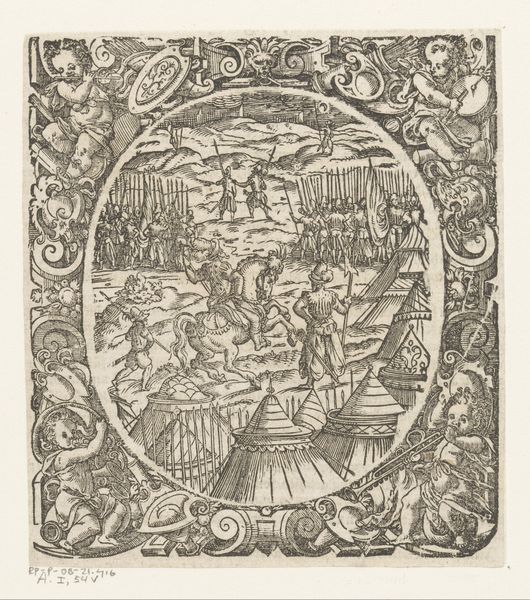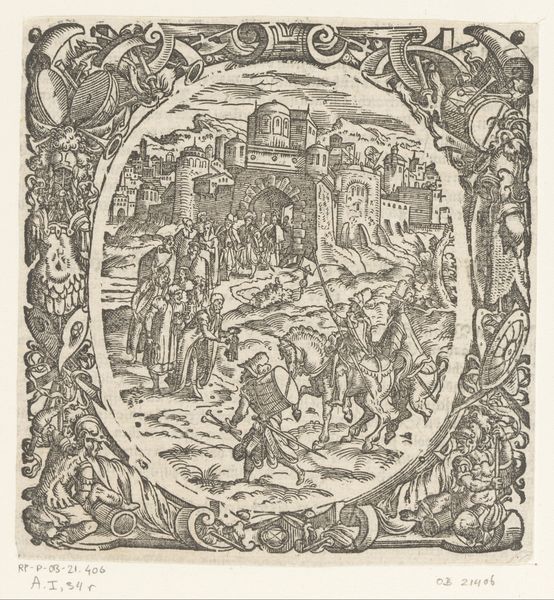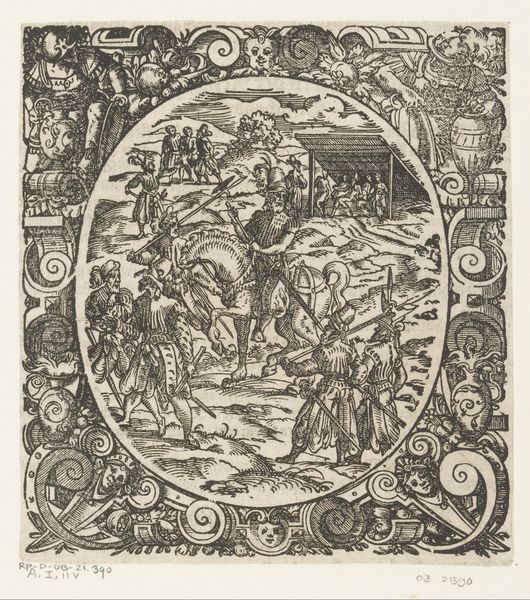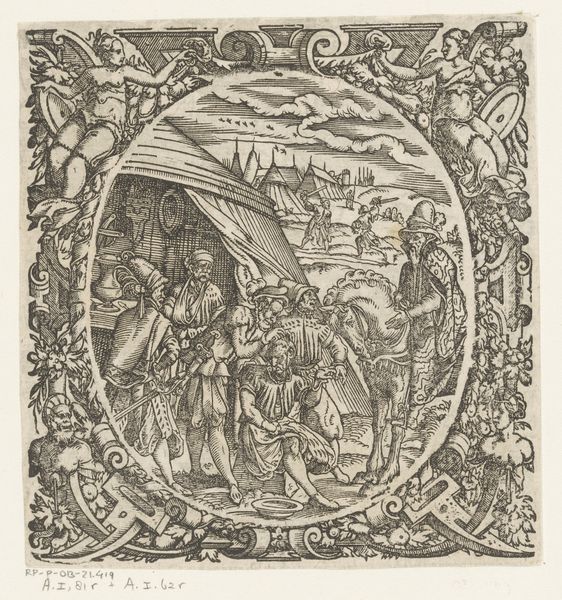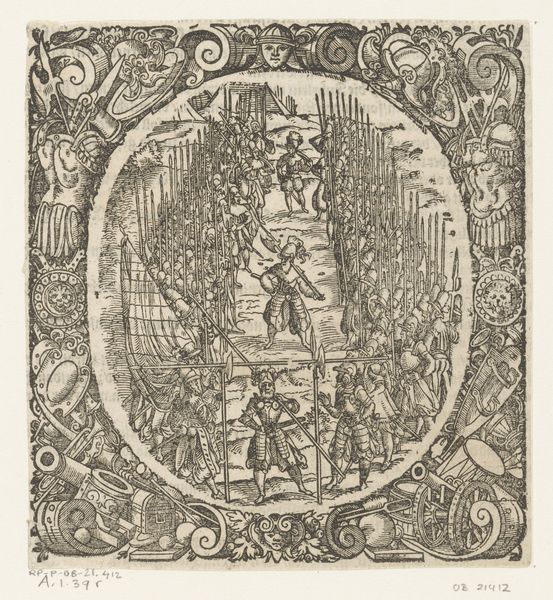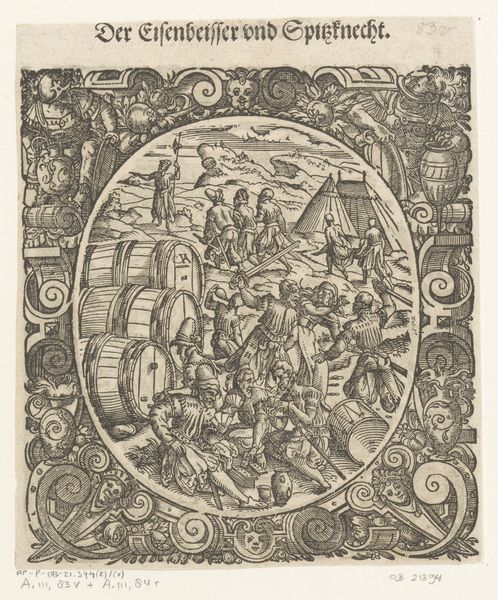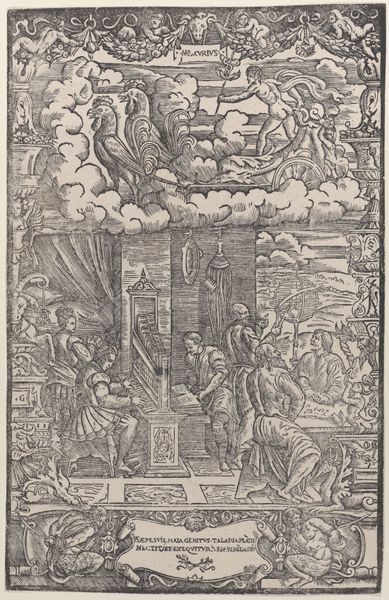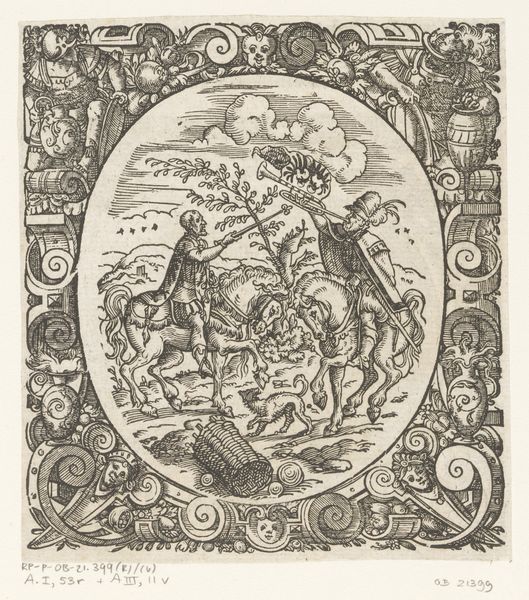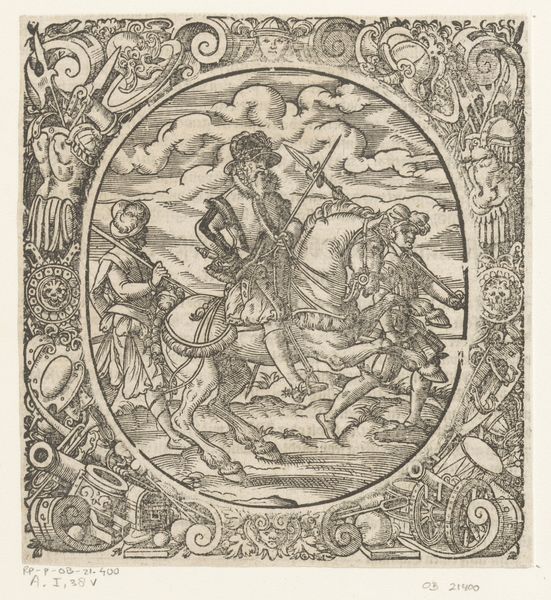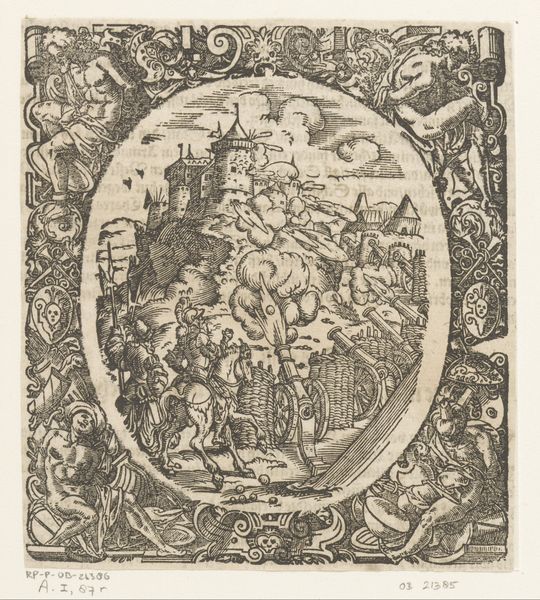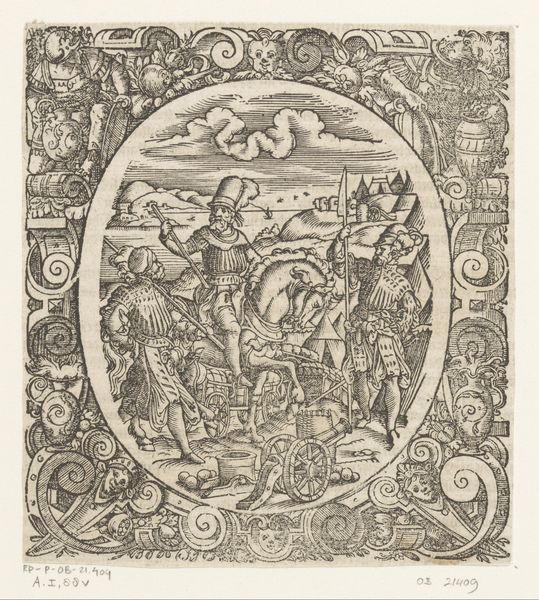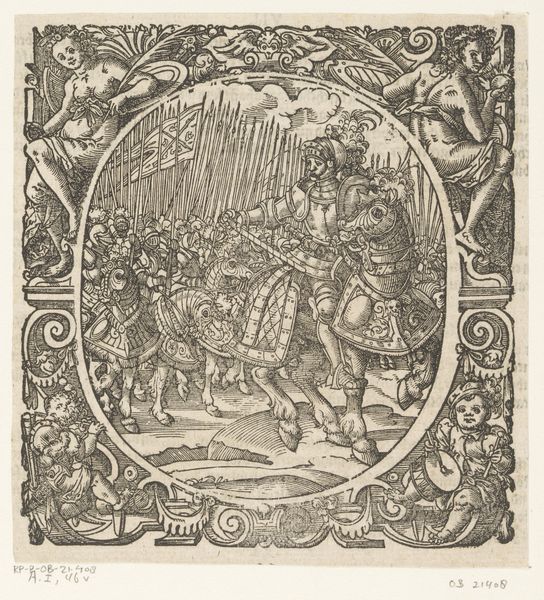
drawing, print, ink, woodcut, engraving
#
drawing
#
medieval
#
narrative-art
# print
#
landscape
#
ink
#
woodcut
#
history-painting
#
northern-renaissance
#
engraving
Dimensions: height 144 mm, width 131 mm, height 113 mm, width 96 mm
Copyright: Rijks Museum: Open Domain
This print, "Aanval van een stad," was created by Jost Amman in the late 16th century, using the process of etching. Etching is a printmaking technique where lines are incised into a metal plate, traditionally copper or zinc, using acid. The plate is covered with a waxy ground resistant to acid. The artist then scratches off the ground with a pointed tool where they want a line to appear in the final print, exposing the bare metal. The plate is then dipped in acid, which eats into the metal where it is exposed, creating incised lines. The remaining ground is removed, and the plate is inked, with the ink residing in the etched lines. Finally, the plate is pressed onto a sheet of paper with high pressure, transferring the ink and creating the print. In Amman’s time, printmaking was a vital industry, allowing images to be reproduced and disseminated widely, contributing to the spread of knowledge, propaganda, and artistic ideas. Consider the labor involved – from the preparation of the metal plate to the skilled handiwork of etching and printing, and the social impact of circulating such imagery. It brings us closer to understanding the intricate relationships between art, production, and society.
Comments
No comments
Be the first to comment and join the conversation on the ultimate creative platform.
